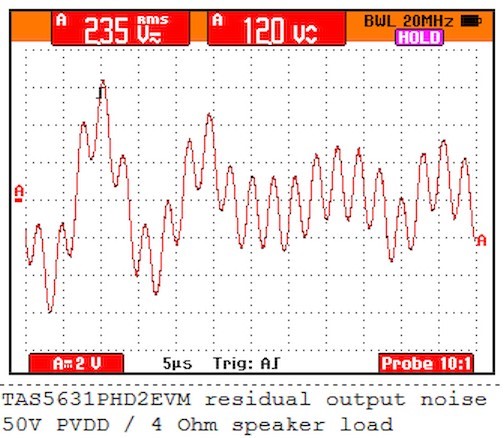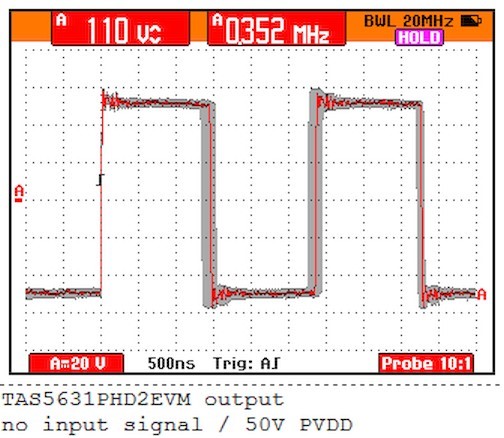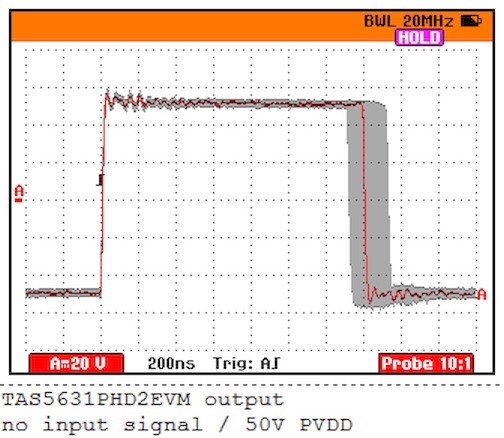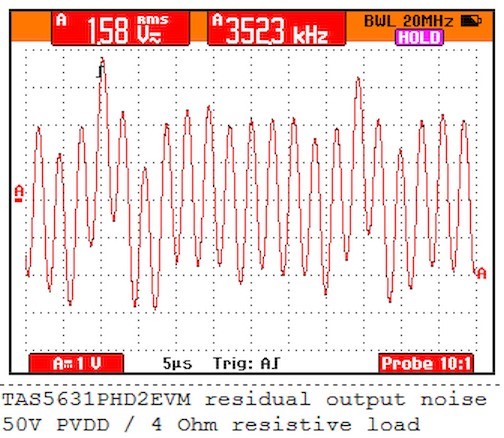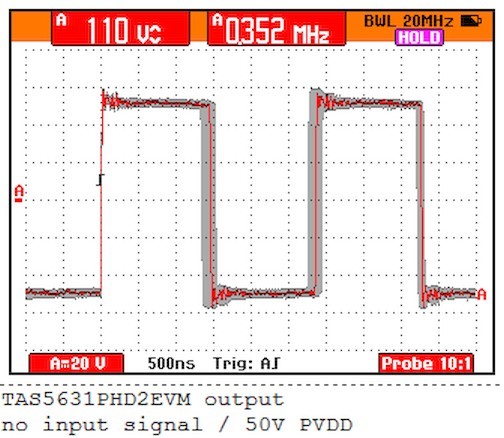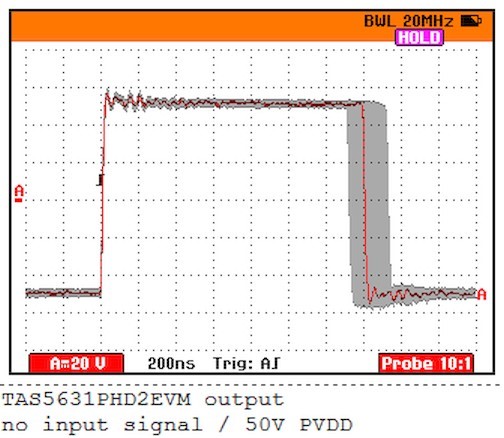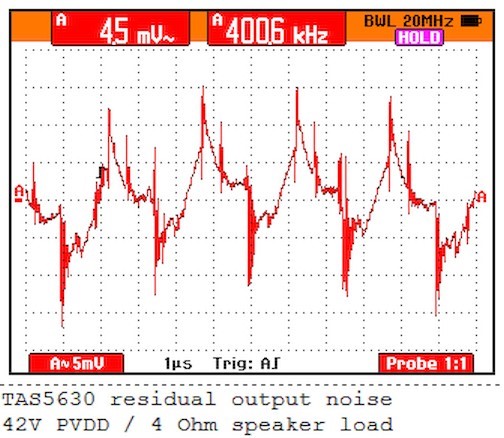Hi Guys,
I have significant output noise issue with TAS5631PHD2EVM. First of all I modified the TAS5518 register 0x04 with the value 0x60 to have the TAS5518 automatic mute function disabled. With this configuration I measured what is on TAS5631PHD2EVM output with no input signal and I am really shocked. This is what I measured:


I performed also A-waighted RMS noise measurement in 20k audio band using NTi XL2 Audio Analyzer and got the result around 24mV! First of all I ask me what do I'm measured wrongly??? Why my EVM generate so high noise on the output???
TI declares output noise voltage < 200µV. I do not hear significant higher noise having a speaker connected to the output but I guess it is because of the noise frequency.
Could someone from TI help me to solve the issue please...
Best regards,
Tomasz


